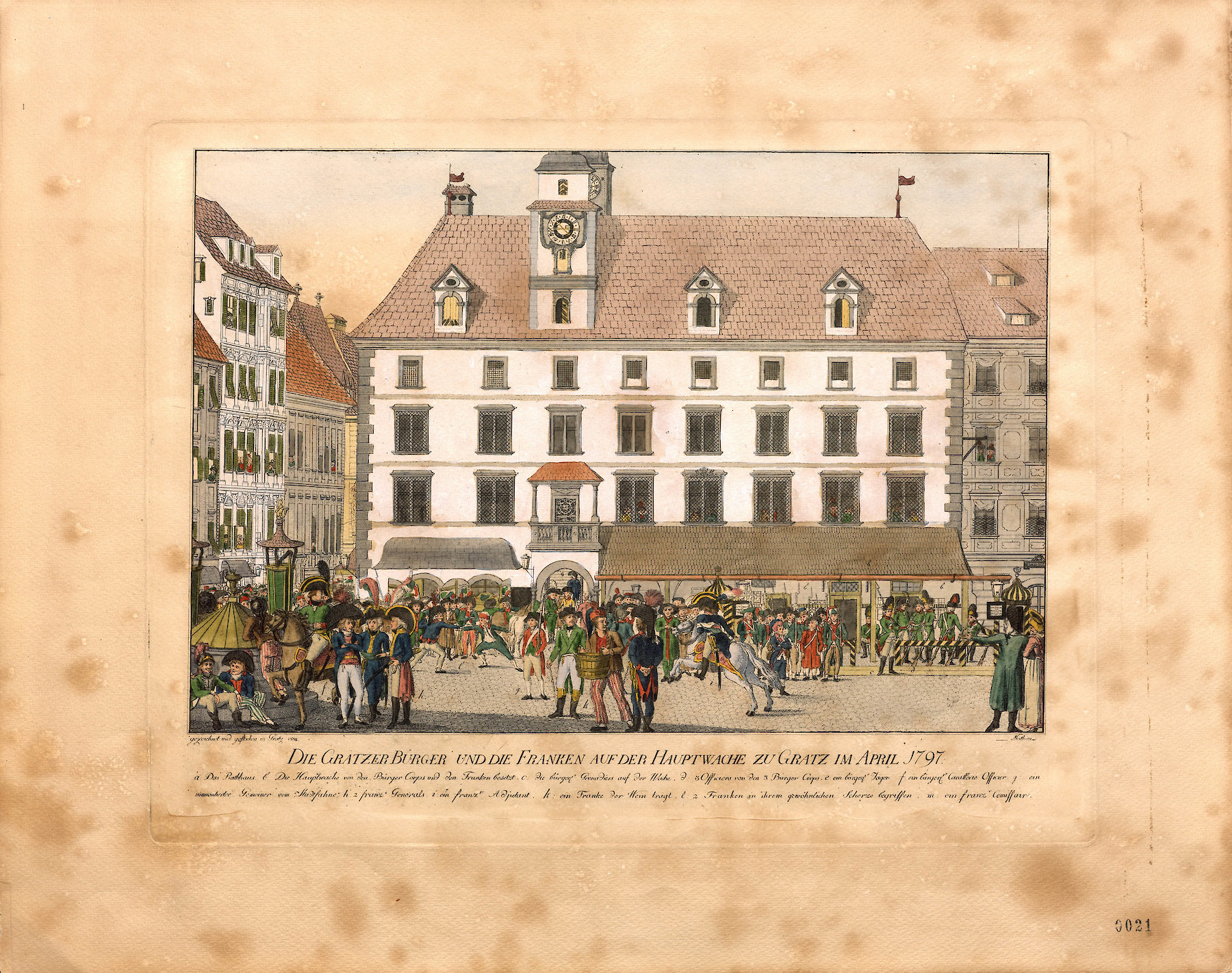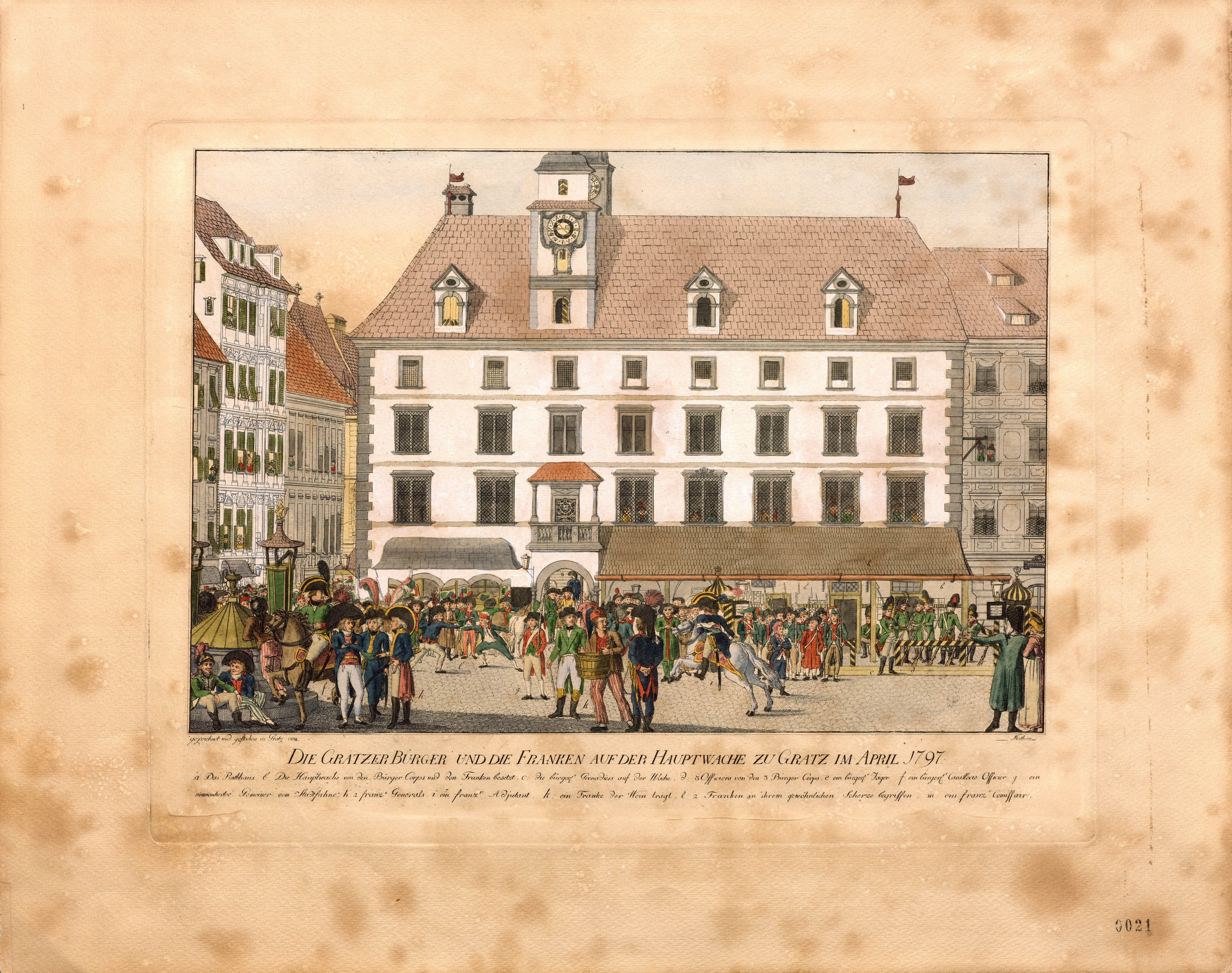
The Hauptwache (i.e. the headquarters of the City Corps), where the French occupiers also installed themselves, was located in the City Hall. It was still the plain Renaissance building from the middle of the 16th century, which was demolished in 1803 and replaced with a more representative classicistic building.
Graz was occupied by French troops three times. In 1797, in 1805, and in 1809. In the last year, after the defeat of the Austrian troops near Wagram, the fortress on the Schloßberg was blown up.
During the French occupation, the Graz Civic Corps provided security in the city. Among other things, it had to fulfil guard duties, and prevent lootings and violent conflicts.
Die Grätzer Bürger und die Franken auf der Hauptwache zu Gratz im April 1797, (The Citizens of Graz And the Frenchmen at the Headquarters of the City Corps in April 1797) J. Mathieu, 1797
Napoleon as Messenger of Revolution
The Emperor of France never visited Graz. But Napoleon did. During his stay in 1797 he was still General of the French Army. The copperplate print shows French occupying forces and the troops of the Graz Civic Corps in front of Graz City Hall. This representation can be interpreted as an image of playful sympathy for the spirit of Enlightenment. The reforms of Joseph II and Leopold II were still resonating and many a citizen of Graz was disappointed by the reactionary rule of Emperor Franz II / I. What the citizens saw in the Frenchmen were messengers of the Revolution heralding liberty, equality and fraternity.
Coloured copperplate print
33 × 48 cm (frame: 52,5 × 68,5 cm)
Graz Museum
Dobler and Napoleon
The Graz merchant and later co-founder of the Handlungsdienerinstitut (later Merkur Insurance), Franz Casper Dobler, was commander-in-chief of the three Graz Civic Corps. These formed the vigilantes together with the so called “Stadtfahne” and provided for the internal security of the city after the regular regiments had left. Dobler was a Freemason, fluent in French and diplomatic. He hosted Napoleon in 1797, and his brother Louis Napoleon in 1810, with great courtesy when they took up quarters in Graz. Together with members of the Civic Corps, Dobler participated in the financial compensation of the French miners and the manual removal of individual fortifications. This ensured the preservation of the Clock Tower and the Bell Tower as well as other historical buildings in Sackstraße, when the Schloßberg fortifications were razed.
The Grazers and the Occupiers
Although Mathieu’s painting signals a relaxed atmosphere between the people of Graz, the Civic Corps and the Frenchmen, the occupation also meant a burden for the city. The people of Graz had to pay for provisions and food for the French troops and provide available military equipment and weapons. Since the rich citizens had left the city as a precaution and had taken their movable goods with them, the main burden of these demands was borne by the middle and lower classes. The city was also burdened financially by high tribute payments.
